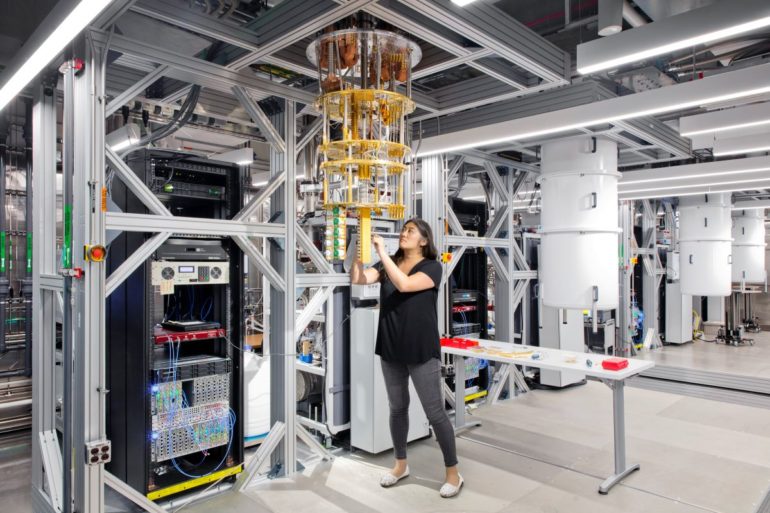While researchers don’t understand everything about the quantum world, what they do know is that quantum particles hold immense potential, in particular to hold and process large amounts of information.
IBM
What is quantum computing and how does it work?
Quantum computing exploits the puzzling behavior that scientists have been observing for decades in nature’s smallest particles – think atoms, photons or electrons. At this scale, the classical laws of physics ceases to apply, and instead we shift to quantum rules.
While researchers don’t understand everything about the quantum world, what they do know is that quantum particles hold immense potential, in particular to hold and process large amounts of information. Successfully bringing those particles under control in a quantum computer could trigger an explosion of compute power that would phenomenally advance innovation in many fields that require complex calculations, like drug discovery, climate modelling, financial optimization or logistics.
As Bob Sutor, chief quantum exponent at IBM, puts it: “Quantum computing is our way of emulating nature to solve extraordinarily difficult problems and make them tractable,” he tells ZDNet.
What is a quantum computer?
Quantum computers come in various shapes and forms, but they are all built on the same principle: they host a quantum processor where quantum particles can be isolated for engineers to manipulate.
The nature of those quantum particles, as well as the method employed to control them, varies from one quantum computing approach to another. Some methods require the processor to be cooled down to freezing temperatures, others to play with quantum particles using lasers – but share the goal of finding out how to best exploit the value of quantum physics.
What’s the difference between a quantum computer and a classical computer?
The systems we have been using since the 1940s in various shapes and forms – laptops, smartphones, cloud servers, supercomputers – are known as classical computers. Those are based on bits, a unit of information that powers every computation that happens in the device.
In a classical computer, each bit can take on either a value of one or zero to represent and transmit the information that is used to carry out computations. Using bits, developers can write programs, which are sets of instructions that are read and executed by the computer.
Classical computers have been indispensable tools in the last few decades, but the inflexibility of bits is limiting. As an analogy, if tasked with looking for a needle in a haystack, a classical computer would have to be programmed to look through every single piece of hay straw until it reached the needle.
There are still many large problems, therefore, that classical devices can’t solve. “There are calculations that could be done on a classical system, but they might take millions of years or use more computer memory that exists in total on Earth,” says Sutor. “These problems are intractable today.”
How do quantum computers improve on classical devices?
At the heart of any quantum computer are qubits, also known as quantum bits, and which can loosely be compared to the bits that process information in classical computers.
Qubits, however, have very different properties to bits, because they are made of the quantum particles found in nature – those same particles that have been obsessing scientists for many years.
One of the properties of quantum particles that is most useful for quantum computing is known as superposition, which allows quantum particles to exist in several states at the same time. The best way to imagine superposition is to compare it to tossing a coin: instead of being heads or tails, quantum particles are the coin while it is still spinning.
By controlling quantum particles, researchers can load them with data to create qubits – and thanks to superposition, a single qubit doesn’t have to be either a one or a zero, but can be both at the same time. In other words, while a classical bit can only be heads or tails, a qubit can be, at once, heads and tails.
This means that, when asked to solve a problem, a quantum computer can use qubits to run several calculations at once to find an answer, exploring many different avenues in parallel.
So in the needle-in-a-haystack scenario about, unlike a classical machine, a quantum computer could in principle browse through all hay straws at the same time, finding the needle in a matter of seconds rather than looking for years – even centuries – before it found what it was searching for.
What’s more: qubits can be physically linked together thanks to another quantum property called entanglement, meaning that with every qubit that is added to a system, the device’s capabilities increase exponentially – where adding more bits only generates linear improvement.
Every time we use another qubit in a quantum computer, we double the amount of information and processing ability available for solving problems. So by the time we get to 275 qubits, we can compute with more pieces of information than there are atoms in the observable universe. And the compression of computing time that this could generate could have big implications in many use cases.
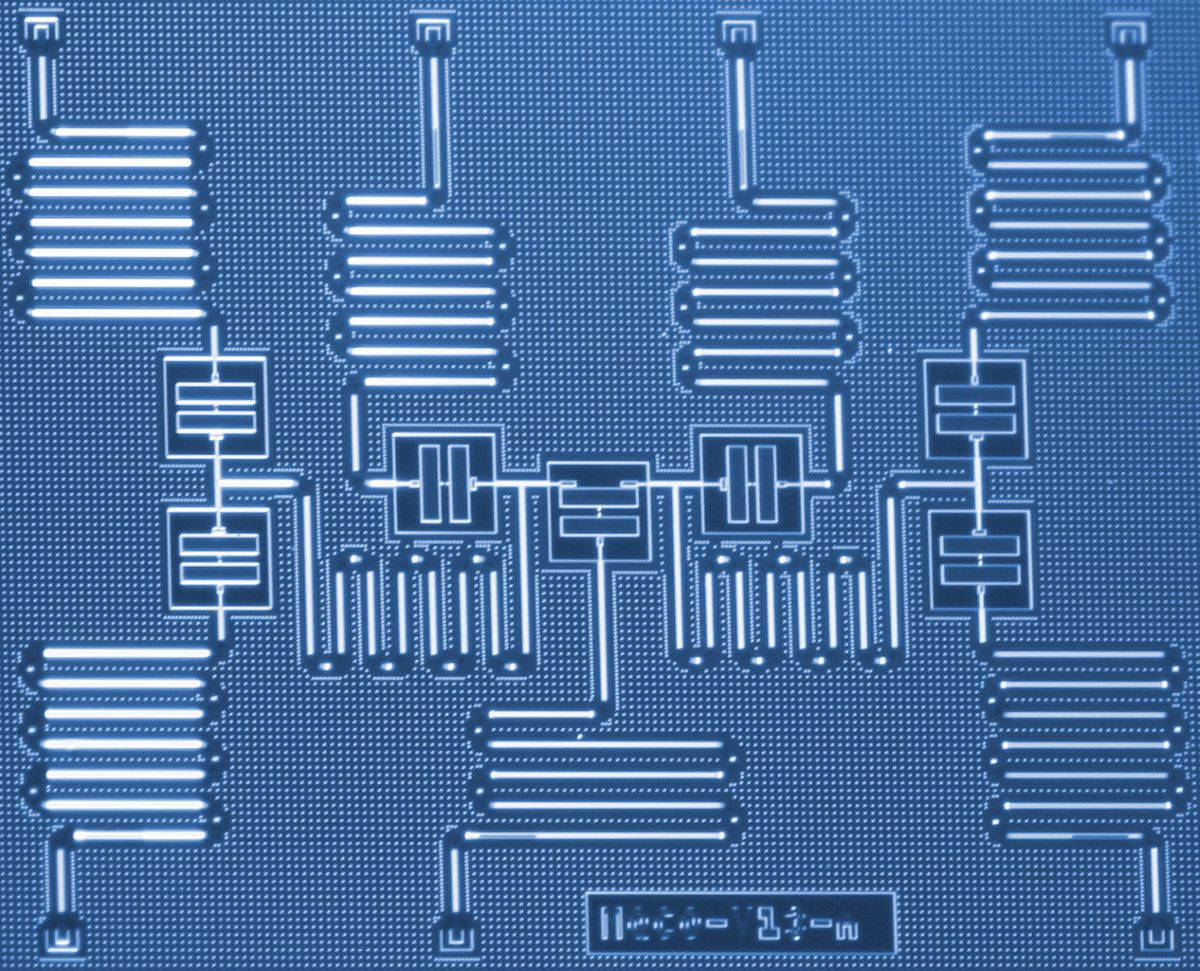

Quantum computers are all built on the same principle: they host a quantum processor where quantum particles can be isolated for engineers to manipulate.
IBM
Why is quantum computing so important?
“There are a number of cases where time is money. Being able to do things more quickly will have a material impact in business,” Scott Buchholz, managing director at Deloitte Consulting, tells ZDNet.
The gains in time that researchers are anticipating as a result of quantum computing are not of the order of hours or even days. We’re rather talking about potentially being capable of calculating, in just a few minutes, the answer to problems that today’s most powerful supercomputers couldn’t resolve in thousands of years, ranging from modelling hurricanes all the way to cracking the cryptography keys protecting the most sensitive government secrets.
And businesses have a lot to gain, too. According to recent research by Boston Consulting Group (BCG), the advances that quantum computing will enable could create value of up to $850 billion in the next 15 to 30 years, $5 to $10 billion of which will be generated in the next five years if key vendors deliver on the technology as they have promised.
What is a quantum computers used for?
Programmers write problems in the form of algorithms for classical computers to resolve – and similarly, quantum computers will carry out calculations based on quantum algorithms. Researchers have already identified that some quantum algorithms would be particularly suited to the enhanced capabilities of quantum computers.
For example, quantum systems could tackle optimization algorithms, which help identify the best solution among many feasible options, and could be applied in a wide range of scenarios ranging from supply chain administration to traffic management. ExxonMobil and IBM, for instance, are working together to find quantum algorithms that could one day manage the 50,000 merchant ships crossing the oceans each day to deliver goods, to reduce the distance and time traveled by fleets.
Quantum simulation algorithms are also expected to deliver unprecedented results, as qubits enable researchers to handle the simulation and prediction of complex interactions between molecules in larger systems, which could lead to faster breakthroughs in fields like materials science and drug discovery.
With quantum computers capable of handling and processing much larger datasets, AI and machine learning applications are set to benefit hugely, with faster training times and more capable algorithms. And researchers have also demonstrated that quantum algorithms have the potential to crack traditional cryptography keys, which for now are too mathematically difficult for classical computers to break.
What are the different types of quantum computers?
To create qubits, which are the building blocks of quantum computers, scientists have to find and manipulate the smallest particles of nature – tiny parts of the universe that can be found thanks to different mediums. This is why there are currently many types of quantum processors being developed by a range of companies.
One of the most advanced approaches consists of using superconducting qubits, which are made of electrons, and come in the form of the familiar chandelier-like quantum computers. Both IBM and Google have developed superconducting processors.
Another approach that is gaining momentum is trapped ions, which Honeywell and IonQ are leading the way on, and in which qubits are housed in arrays of ions that are trapped in electric fields and then controlled with lasers.
Major companies like Xanadu and PsiQuantum, for their part, are investing in yet another method that relies on quantum particles of light, called photons, to encode data and create qubits. Qubits can also be created out of silicon spin qubits – which Intel is focusing on – but also cold atoms or even diamonds.
Quantum annealing, an approach that was chosen by D-Wave, is a different category of computing altogether. It doesn’t rely on the same paradigm as other quantum processors, known as the gate model. Quantum annealing processors are much easier to control and operate, which is why D-Wave has already developed devices that can manipulate thousands of qubits, where virtually every other quantum hardware company is working with about 100 qubits or less. On the other hand, the annealing approach is only suitable for a specific set of optimization problems, which limits its capabilities.
What can you do with a quantum computer today?
Right now, with a mere 100 qubits the state of the art, there is very little that can actually be done with quantum computers. For qubits to start carrying out meaningful calculations, they will have to be counted in the thousands, and even millions.
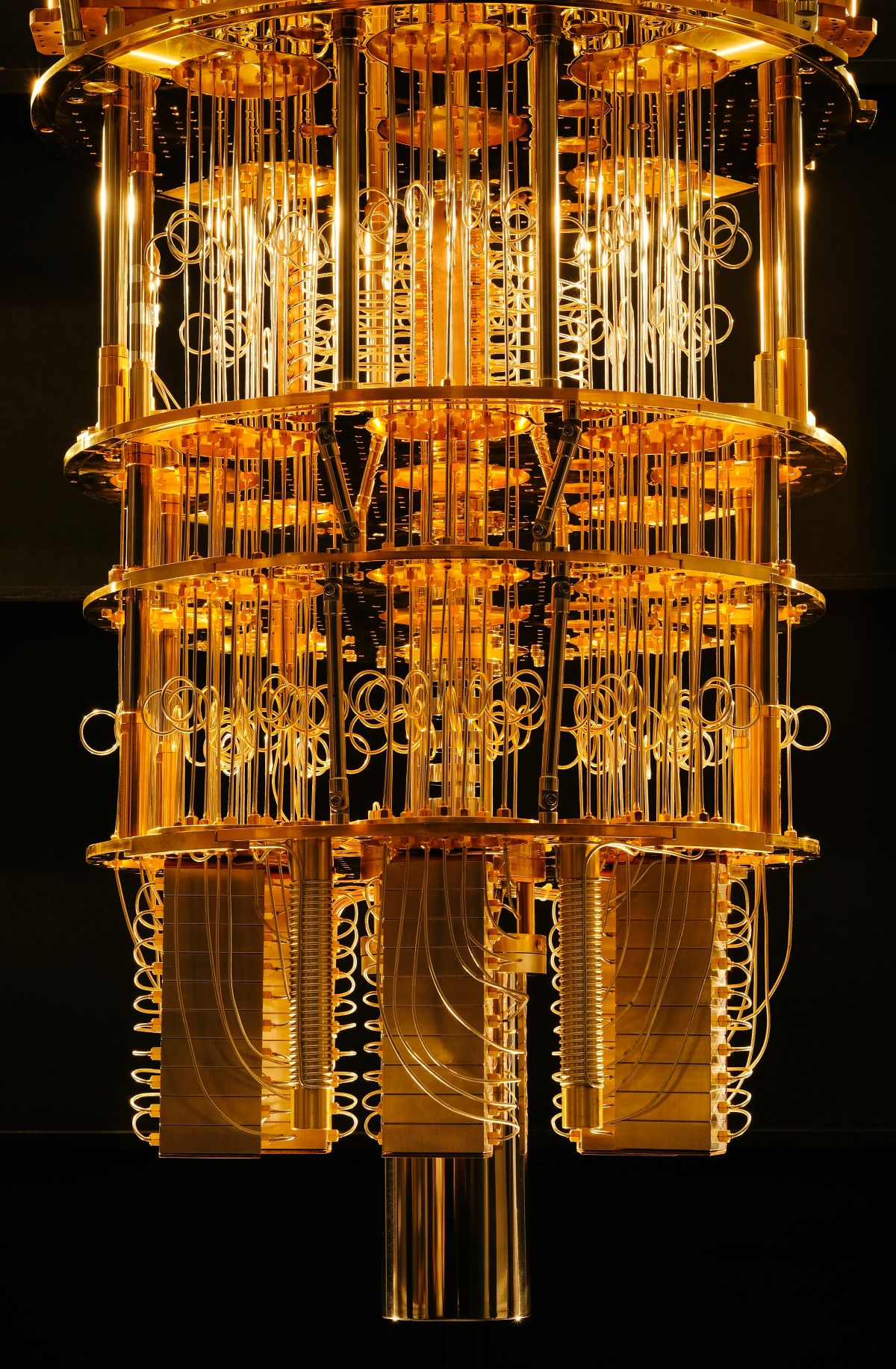

Both IBM and Google have developed superconducting processors.
IBM
What can you do with a quantum computer today?
Right now, with a mere 100 qubits the state of the art, there is very little that can actually be done with quantum computers. For qubits to start carrying out meaningful calculations, they will have to be counted in the thousands, and even millions.
“While there is a tremendous amount of promise and excitement about what quantum computers can do one day, I think what they can do today is relatively underwhelming,” says Buchholz.
Increasing the qubit count in gate-model processors, however, is incredibly challenging. This is because keeping the particles that make up qubits in their quantum state is difficult – a little bit like trying to keep a coin spinning without falling on one side or the other, except much harder.
Keeping qubits spinning requires isolating them from any environmental disturbance that might cause them to lose their quantum state. Google and IBM, for example, do this by placing their superconducting processors in temperatures that are colder than outer space, which in turn require sophisticated cryogenic technologies that are currently near-impossible to scale up.
In addition, the instability of qubits means that they are unreliable, and still likely to cause computation errors. This has given rise to a branch of quantum computing dedicated to developing error-correction methods.
Although research is advancing at pace, therefore, quantum computers are for now stuck in what is known as the NISQ era: noisy, intermediate-scale quantum computing – but the end-goal is to build a fault-tolerant, universal quantum computer.
As Buchholz explains, it is hard to tell when this is likely to happen. “I would guess we are a handful of years from production use cases, but the real challenge is that this is a little like trying to predict research breakthroughs,” he says. “It’s hard to put a timeline on genius.”
What is quantum supremacy?
In 2019, Google claimed that its 54-qubit superconducting processor called Sycamore had achieved quantum supremacy – the point at which a quantum computer can solve a computational task that is impossible to run on a classical device in any realistic amount of time.
Google said that Sycamore has calculated, in only 200 seconds, the answer to a problem that would have taken the world’s biggest supercomputers 10,000 years to complete.
More recently, researchers from the University of Science and Technology of China claimed a similar breakthrough, saying that their quantum processor had taken 200 seconds to achieve a task that would have taken 600 million years to complete with classical devices.
This is far from saying that either of those quantum computers are now capable of outstripping any classical computer at any task. In both cases, the devices were programmed to run very specific problems, with little usefulness aside from proving that they could compute the task significantly faster than classical systems.
Without a higher qubit count and better error correction, proving quantum supremacy for useful problems is still some way off.
What is the use of quantum computers now?
Organizations that are investing in quantum resources see this as the preparation stage: their scientists are doing the groundwork to be ready for the day that a universal and fault-tolerant quantum computer is ready.
In practice, this means that they are trying to discover the quantum algorithms that are most likely to show an advantage over classical algorithms once they can be run on large-scale quantum systems. To do so, researchers typically try to prove that quantum algorithms perform comparably to classical ones on very small use cases, and theorize that as quantum hardware improves, and the size of the problem can be grown, the quantum approach will inevitably show some significant speed-ups.
For example, scientists at Japanese steel manufacturer Nippon Steel recently came up with a quantum optimization algorithm that could compete against its classical counterpart for a small problem that was run on a 10-qubit quantum computer. In principle, this means that the same algorithm equipped with thousands or millions of error-corrected qubits could eventually optimize the company’s entire supply chain, complete with the management of dozens of raw materials, processes and tight deadlines, generating huge cost savings.
The work that quantum scientists are carrying out for businesses is therefore highly experimental, and so far there are fewer than 100 quantum algorithms that have been shown to compete against their classical equivalents – which only points to how emergent the field still is.
Who is going to win the quantum computing race?
With most use cases requiring a fully error-corrected quantum computer, just who will deliver one first is the question on everyone’s lips in the quantum industry, and it is impossible to know the exact answer.
All quantum hardware companies are keen to stress that their approach will be the first one to crack the quantum revolution, making it even harder to discern noise from reality. “The challenge at the moment is that it’s like looking at a group of toddlers in a playground and trying to figure out which one of them is going to win the Nobel Prize,” says Buchholz.
“I have seen the smartest people in the field say they’re not really sure which one of these is the right answer. There are more than half a dozen different competing technologies and it’s still not clear which one will wind up being the best, or if there will be a best one,” he continues.
In general, experts agree that the technology will not reach its full potential until after 2030. The next five years, however, may start bringing some early use cases as error correction improves and qubit counts start reaching numbers that allow for small problems to be programmed.
IBM is one of the rare companies that has committed to a specific quantum roadmap, which defines the ultimate objective of realizing a million-qubit quantum computer. In the nearer-term, Big Blue anticipates that it will release a 1,121-qubit system in 2023, which might mark the start of the first experimentations with real-world use cases.
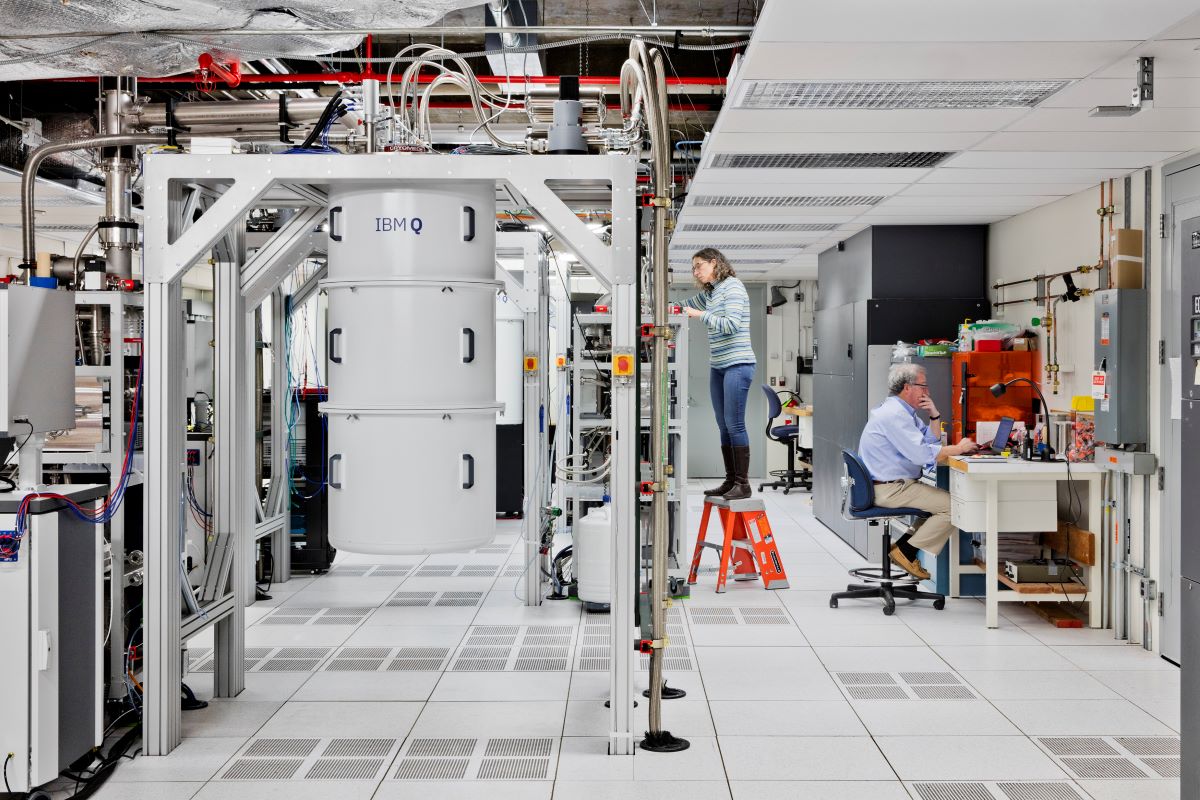

In general, experts agree that quantum computers will not reach their full potential until after 2030.
IBM
What about quantum software?
Developing quantum hardware is a huge part of the challenge, and arguably the most significant bottleneck in the ecosystem. But even a universal fault-tolerant quantum computer would be of little use without the matching quantum software.
“Of course, none of these online facilities are much use without knowing how to ‘speak’ quantum,” Andrew Fearnside, senior associate specializing in quantum technologies at intellectual property firm Mewburn Ellis, tells ZDNet.
Creating quantum algorithms is not as easy as taking a classical algorithm and adapting it to the quantum world. Quantum computing, rather, requires a brand-new programming paradigm that can only be ran on a brand-new software stack.
Of course, some hardware providers also develop software tools, the most established of which is IBM’s open-source quantum software development kit Qiskit. But on top of that, the quantum ecosystem is expanding to include companies dedicated exclusively to creating quantum software. Familiar names include Zapata, QC Ware or 1QBit, which all specialize in providing businesses with the tools to understand the language of quantum.
And increasingly, promising partnerships are forming to bring together different parts of the ecosystem. For example, the recent alliance between Honeywell, which is building trapped ions quantum computers, and quantum software company Cambridge Quantum Computing (CQC), has got analysts predicting that a new player could be taking a lead in the quantum race.
What is cloud quantum computing?
The complexity of building a quantum computer – think ultra-high vacuum chambers, cryogenic control systems and other exotic quantum instruments – means that the vast majority of quantum systems are currently firmly sitting in lab environments, rather than being sent out to customers’ data centers.
To let users access the devices to start running their experiments, therefore, quantum companies have launched commercial quantum computing cloud services, making the technology accessible to a wider range of customers.
The four largest providers of public cloud computing services currently offer access to quantum computers on their platform. IBM and Google have both put their own quantum processors on the cloud, while Microsoft’s Azure Quantum and AWS’s Braket service let customers access computers from third-party quantum hardware providers.
What does the quantum computing industry look like today?
The jury remains out on which technology will win the race, if any at all, but one thing is for certain: the quantum computing industry is developing fast, and investors are generously funding the ecosystem. Equity investments in quantum computing nearly tripled in 2020, and according to BCG, they are set to rise even more in 2021 to reach $800 million.
Government investment is even more significant: the US has unlocked $1.2 billion for quantum information science over the next five years, while the EU announced a €1 billion ($1.20 billion) quantum flagship. The UK also recently reached the £1 billion ($1.37 billion) budget milestone for quantum technologies, and while official numbers are not known in China, the government has made no secret of its desire to aggressively compete in the quantum race.
This has caused the quantum ecosystem to flourish over the past years, with new start-ups increasing from a handful in 2013 to nearly 200 in 2020. The appeal of quantum computing is also increasing among potential customers: according to analysis firm Gartner, while only 1% of companies were budgeting for quantum in 2018, 20% are expected to do so by 2023.
Who is getting quantum-ready now?
Although not all businesses need to be preparing themselves to keep up with quantum-ready competitors, there are some industries where quantum algorithms are expected to generate huge value, and where leading companies are already getting ready.
Goldman Sachs and JP Morgan are two examples of financial behemoths investing in quantum computing. That’s because in banking, quantum optimization algorithms could give a boost to portfolio optimization, by better picking which stocks to buy and sell for maximum return.
In pharmaceuticals, where the drug discovery process is on average a $2 billion, ten-year-long deal that largely relies on trial and error, quantum simulation algorithms are also expected to make waves. This is also the case in materials science: companies like OTI Lumionics, for example, are exploring the use of quantum computers to design more efficient OLED displays.
Leading automotive companies including Volkswagen and BMW are also keeping a close eye on the technology, which could impact the sector in various ways, ranging from designing more efficient batteries to optimizing the supply chain, through to better management of traffic and mobility. Volkswagen, for example, pioneered the use of a quantum algorithm that optimized bus routes in real time by dodging traffic bottlenecks.
As the technology matures, however, it is unlikely that quantum computing will be limited to a select few. Rather, analysts anticipate that virtually all industries have the potential to benefit from the computational speedup that qubits will unlock.
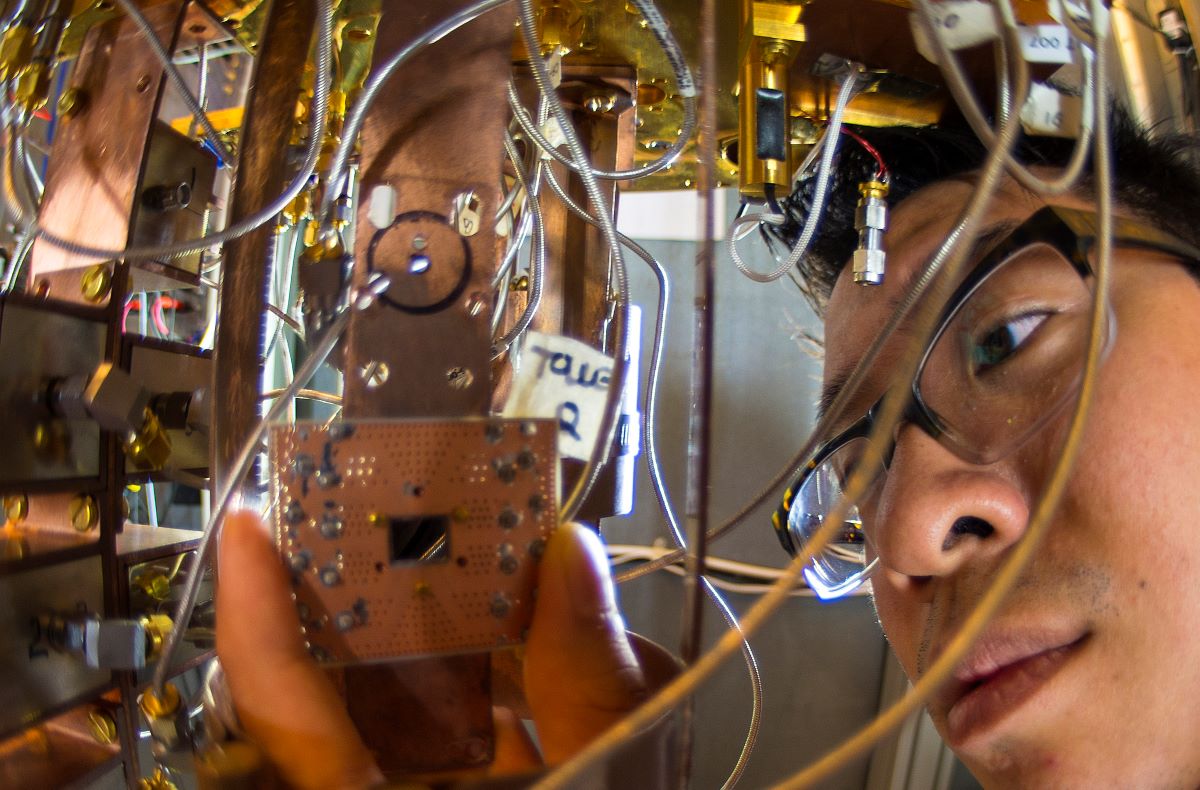

There are some industries where quantum algorithms are expected to generate huge value, and where leading companies are already getting ready.
IBM
Will quantum computers replace our laptops?
Quantum computers are expected to be phenomenal at solving a certain class of problems, but that doesn’t mean that they will be a better tool than classical computers for every single application. Particularly, quantum systems aren’t a good fit for fundamental computations like arithmetic, or for executing commands.
“Quantum computers are great constraint optimizers, but that’s not what you need to run Microsoft Excel or Office,” says Buchholz. “That’s what classical technology is for: for doing lots of maths, calculations and sequential operations.”
In other words, there will always be a place for the way that we compute today. It is unlikely, for example, that you will be streaming a Netflix series on a quantum computer anytime soon. Rather, the two technologies will be used in conjunction, with quantum computers being called for only where they can dramatically accelerate a specific calculation.
How will we use quantum computers?
Buchholz predicts that, as classical and quantum computing start working alongside each other, access will look like a configuration option. Data scientists currently have a choice of using CPUs or GPUs when running their workloads, and it might be that quantum processing units (QPUs) join the list at some point. It will be up to researchers to decide which configuration to choose, based on the nature of their computation.
Although the precise way that users will access quantum computing in the future remains to be defined, one thing is certain: they are unlikely to be required to understand the fundamental laws of quantum computing in order to use the technology.
“People get confused because the way we lead into quantum computing is by talking about technical details,” says Buchholz. “But you don’t need to understand how your cellphone works to use it.”
“People sometimes forget that when you log into a server somewhere, you have no idea what physical location the server is in or even if it exists physically at all anymore. The important question really becomes what it is going to look like to access it.”
And as fascinating as qubits, superposition, entanglement and other quantum phenomena might be, for most of us this will come as welcome news.
